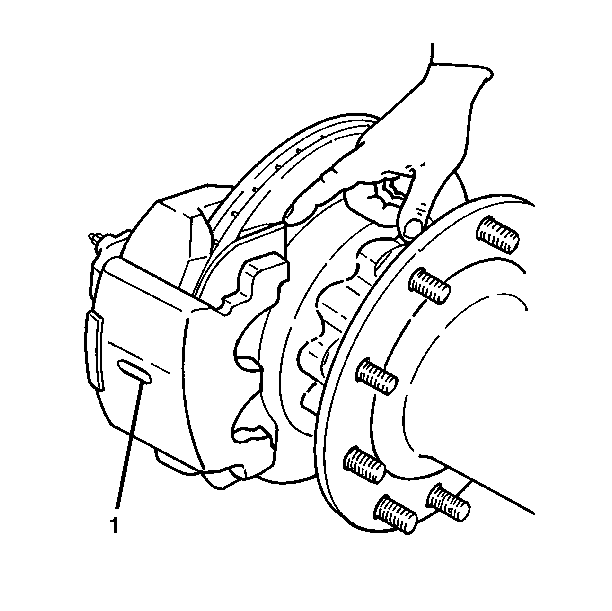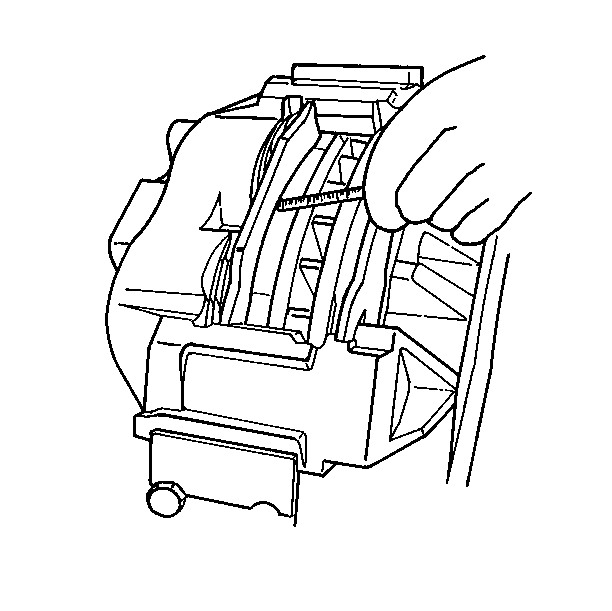Inspect the brake linings every 10 000 km (6,000 miles) and any time that the wheels are removed for tire rotation, etc. The preliminary inspection can be made with a mirror and a flashlight. The wheels must be removed in order to measure the linings.

The linings can be measured with the caliper installed. The edges of both linings on the Dayton-Walther calipers and the outer lining on the Bendix calipers are exposed for easy inspection. The inner lining on the Bendix calipers can be check through an inspection hole (1) in the caliper.

The linings should be replaced when they are worn to 1.6 mm (0.063 in). Measure the linings at their thinnest point.
The linings should lightly contact the rotor or have no more than 0.13 mm (0.005 in) clearance. It is normal for the brakes to drag if the brakes were applied shortly before checking the clearance. If the linings are more than 0.13 mm (0.005 in) from the rotor, pump the brake pedal several times and recheck the clearance. If the clearance is still too great, check for unevenly worn surfaces on the rotor, the linings, or the calliper pistons. New linings may have more clearance until they have worn to match the rotor. If the gap between either piston face and the pad is greater than 1.8 mm (0.070 in), the caliper must be overhauled. Refer to Brake Caliper Replacement
The caliper assembly must be removed in order to inspect the lining surface conditions. The linings should be free of grease and oil. The linings should show at least 70 percent wear over the braking surface in order to indicate good lining contact.
